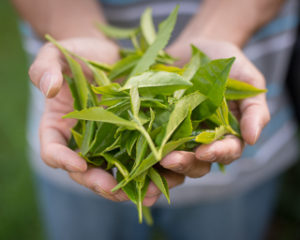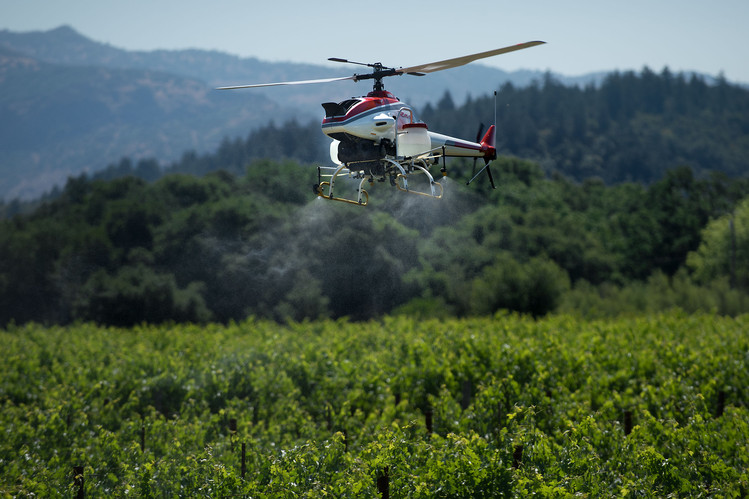 It’s no news that climate change is a growing, severe and global problem. Alas, it’s also not news that this is getting worse. For the tea industry, the impacts are becoming more and more apparent. The consensual figure is that 20-50% of the positives of tea will be lost within the next two to three decades: yield, farmer income, topsoil, quality, flavor, etc.
It’s no news that climate change is a growing, severe and global problem. Alas, it’s also not news that this is getting worse. For the tea industry, the impacts are becoming more and more apparent. The consensual figure is that 20-50% of the positives of tea will be lost within the next two to three decades: yield, farmer income, topsoil, quality, flavor, etc.
These are guesses at best and vary in the exact metrics. The main point is that pessimism is dominant in forecasts.
This blog post reviews focused grower initiatives that are mitigating climate change. It doesn’t dwell on the big picture problems only because they are so well documented and discussed. But equally it’s not a Pollyanna meets the Tooth Fairy dismissal of them. These localized innovations are mostly holding actions that help preserve land, livelihoods and sustainability. There may be no long-term macro solution. The global trends and lack of coordinated policy and coordination are less than encouraging.
That said, the fight against climate degradation is producing some positive results and a body of good practice is emerging. Here are just a few representative successes
Energy savings
 Mokomboki factory in Kenya initiated a program that shows the scale of direct energy savings by replacing firewood with briquettes made of biomass waste. Its energy expenses fell from $542,000 to $295,000. It has entirely eliminated the use of timber.
Mokomboki factory in Kenya initiated a program that shows the scale of direct energy savings by replacing firewood with briquettes made of biomass waste. Its energy expenses fell from $542,000 to $295,000. It has entirely eliminated the use of timber.
The briquettes are made from waste material collected from farms and saw mills: macadamia, cashew and rice husks, straw, sawdust, etc. Mills often burn the sawdust just to get rid of it.
Land use and waste management
Also in Kenya, one large factory has recruited a cadre of agents to educate its 3,000 members in improved land use and waste management. A joint venture between the Rukureri factory and the Rainbow Alliance, the service is advisory but Rainforest is using certification as an incentive. (Such certification has critics who point to the rigidity and complexity of many of the processes.)
The main areas of advice are to establish vegetative barriers along the edges of the many small rivers and next to forested areas. In addition, biodegradable and non degradable household waste are to be separated and soakpits used to prevent toxic waste from draining into farms. Farmers report a substantial drop in health problems.
Innovations in Kenya are especially urgent since over forty percent of the nation’s labor force work in farming. The government estimates that $13 billion will be needed to implement its proposed National Climate Change Action Plan, roughly the current national budget.
Irrigation
Combined with selection of clonal varietals, gardens are reporting substantial reductions in water waste from such techniques as drip irrigation. In Vietnam, water use efficiency is just 42%, meaning over half is wasted. That can be doubled. Kenya’s Michimikuru Tea Company has trained farmers to discontinue their planting of fast-growing eucalyptus to sell for firewood: it sucks rivers dry. Learning to recognize the many different trees and replace water-inefficient ones with indigenous ones has produced a “noticeable” improvement in river volumes.
In Tanzania, drip irrigation at Igoda farm increases yield – more “crop per drop” while cutting water waste by 30%
Agtech and precision farming
It can be foolhardy to bet on new technologies as simple and fast solutions to complex and long-term problems. There are several developments, however, where the case seems compelling. “Agtech” – precision farming, drones, aerial mapping and multi-spectrum imaging – and neural modeling and related AI techniques are to some degree “faith-based” predictions rather than proven tools. But even in their staccato progress, there are powerful examples of benefits. Standouts from just drone use in farming are:
 Infra-red plant diagnostics: signs of plant stress are apparent through sensors ten days before the physical damage is visible.
Infra-red plant diagnostics: signs of plant stress are apparent through sensors ten days before the physical damage is visible.
Satellite and aircraft imaging: halves the costs for farms smaller than twenty hectares. Spraying: water savings of up to 90%, chemicals reduced 30-50%. Labor savings factor of 10 and up, 5 times faster than tractor application of pesticides.
Planting: decrease in costs of 85%
Irrigation, health assessment: hyperspectral, thermal and multispectral sensors identify field areas of dryness, heat signatures, vegetation index of density and growth, bacterial and fungal infestions.
Clonal cultivars
Stress-tolerant tea clones are an important long-established adaptation aid to farming. India’s Tocklai Tea Research Institute has developed 33 clones plus 150 vegetable and flower ones and a dozen seed stocks. These vary in their characteristics – yield, level of drought resistance, suitability for marginal land and soil with poor drainage, etc. Biogenetic molecular science seems sure to speed up and extend clonal methods: gene profiling, genome mapping and micropropagation are examples.
How quickly small growers will benefit from these tools is impossible to predict.
Biodynamic management
Biomanagement is organic identity, with or without formal organic certification. Certification in many countries, especially China, is bureaucratic, expensive and cumbersome. Many of the best smallholder teas adopt a more comprehensive holistic farming ethos and set of practices. This biomanagement is everything natural, whereas the organic label addresses pesticide-free and biofertilization farming. It adds to this soil renewal, irrigation, biodiversity, multi- versus monoculture crop choices, tree shading, and use of natural nutrients.
Gardens are creating their own microclimates. Koomsong in Assam, for instance, planted 30,000 tall trees in 2014 alone. These are placed to protect the bushes and lower the air temperatures that dry out the soil faster. Irrigation is a lesser priority, because of the large spread of the estate – 300 hectares is not unusual. “Irrigation cannot be a substitute for rainfall. It can only help reduce our losses.” Government subsidies the costs. They do not, however, cover insurance or compensation for catastrophic weather damage,
Darjeeling estates face longstanding and escalating stresses that largely reflect management failures. They demand management solutions. Ambootia’s include as taking over “sick” estates and converting them from conventional to organic farming. As is well known, the transition reduces yields for several years. The plus side of the investment equation is that a growing fraction of consumers want premium tea products that are organically grown, with clear statements of ingredients and sourcing, simple explanations, and descriptions.
Organic is core to biomanagement and every climate adaptation policy and program moves towards it. There are signs of general progress though they are often offset by more macro forces. For instance, reforestation of plantations has increased but overall deforestation continues to grow even faster. Figures from 2015 show the progress in Darjeeling’s transition to organic farming, from 53 to 77 tea gardens since 2007, with a corresponding growth in acreage and production. This has not offset the decline in output accelerated by the 2017 strikes and civil unrest. Darjeeling’s economic future is uncertain at best.
Go back to build the future
At one level, the commonality of climate mitigation best practice s discouraging in that they amount to saying: Go Back to the Good Old Days. Biomanagement, soil renewal, irrigation, biodiversity, multi- versus monoculture crop choices, and use of natural nutrients all reflect how good tea has always been made. Pesticides, soil erosion, commoditization and yield rather than quality are steps back rather than forward. They are at best compromises and often concessions to global market pressures. The forces that created the shifts aren’t going to ease and smallholders will be unable to reverse course in many instances.
On the other hand, the damage created by poor management and methods can be reversed at the local level. If the weather cooperates. And, most of all, if large enough percentage of consumers are willing to pay for premiumization.